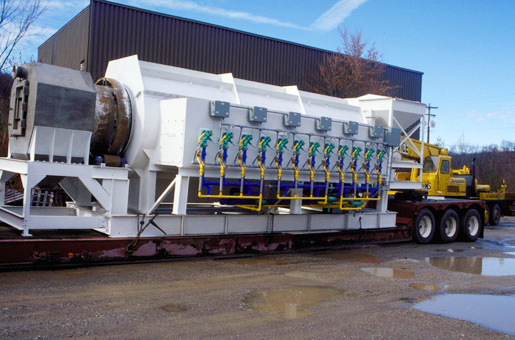
Posted on January 17th, 2024 by hpprocess
You cannot imagine a modern bulk solids industry without picturing large machines that perform thermal processes such as heating, drying, and cooling. Whether treating minerals, chemicals, coal, fly ash, biomass, or food products, thermal processing is an inherent part of several processes.
Thermal processing has diverse methods, each with pros and cons. Processors mainly use direct or indirect heating techniques.
Understanding how these methods work and their pros and cons is crucial in deciding what equipment works best for your application.
Direct Heating Technology
As the name suggests, direct heating involves heat exchange when bulk solids come in direct contact with the heating agent.
How It Works
Vertical enclosed hopper bins or silos are employed in direct bulk solid heat exchangers, facilitating gas injection, typically air, for direct heating or cooling of flowing material within the equipment. The gas and bulk solid (e.g., powder) enter the heat exchanger as two separate streams with distinct temperatures. The gas can follow two routes: it can move counter-currently to the bulk solid or cross-currently, perpendicular to the material’s movement.
Pros:
- Maintenance becomes simpler and less involved in direct heating systems compared to indirect counterparts.
- Direct systems’ simplicity makes them cost-effective, aiding repair, replacement, and relocation, minimizing downtime during issues.
Cons:
- Direct contact heat transfer needs lots of air for adequate heating, cooling, or drying. This requires air handling systems, big fans, extensive ducting, and emission stacks.
- Pre-heating, processing, and cleaning the air consume high energy.
- Direct heat transfer causes significant dust and emissions, which require pre-release cleaning to meet environmental norms.
Indirect Heating Technology
With indirect rotary kilns, also known as calciners, there is no contact between the material and the heat exchange medium. It uses convection, conduction, or radiation for heat exchange.
How It Works
The process involves heating water or fluid flowing in the opposite direction through the hollow plates to achieve heat transfer via conduction. As a freely flowing bulk solid (such as powder, food product, or mineral) moves downward between the plates, heat transfer occurs between the material and the plates due to extended retention time.
Pros:
- Indirect heating use less energy since there is no air involved in the process, reducing the use of additional attachments.
- Fine materials are easily handled, avoiding excessive material entrainment in the gas stream.
- No direct contact of the heating medium with the product prevents contamination, reduces exhaust gas, and minimizes emission control, making it eco-friendly.
- Indirect systems can also offer a controlled internal process environment, such as an inert, oxidizing, reducing, or dehumidifying atmosphere.
- They can handle high temperatures with precise temperature control and varied temperature zones across the shell.
- Indirect rotary kilns provide a higher product-to-surface-area ratio for efficient thermal exchange.
- This system’s lack of movable parts leads to reduced maintenance and downtime.
Cons:
- The design of a rotary calciner is a bit complex since it requires no-contact heat exchange between the product and the heating agent.
Get Highly Customized Solutions For Your Thermal Processing Needs
As technology advances, processors move toward indirect heating systems since they are cost-effective and consume less power while providing a controlled heating environment.
Heyl Patterson offers efficient direct and indirect heating systems ideal for efficiently processing materials in several industries.
For instance, our calciners can process many fine and dusty materials, oxidation-sensitive, inflammable, potentially contaminating, or thermally sensitive. Our engineers stand ready to build calciners as per your custom application requirements.
Contact us today to optimize your thermal processing systems or learn more about direct and indirect heating systems.










